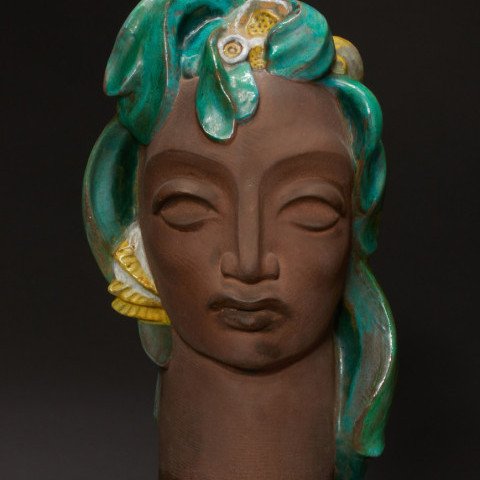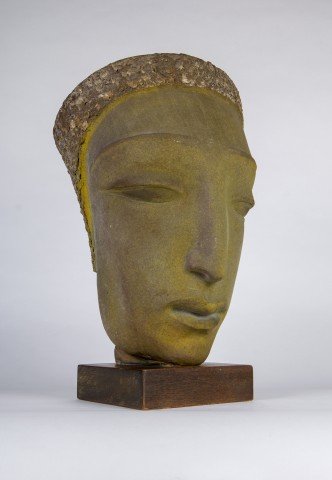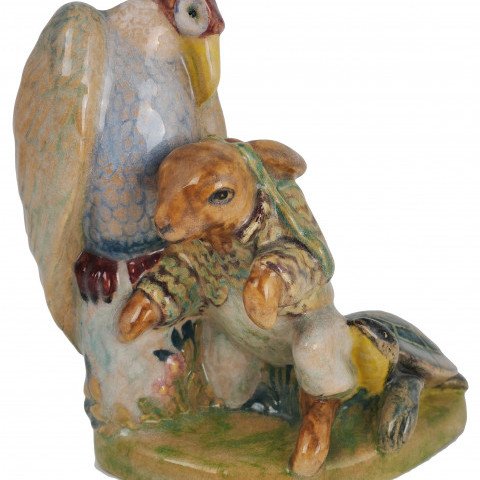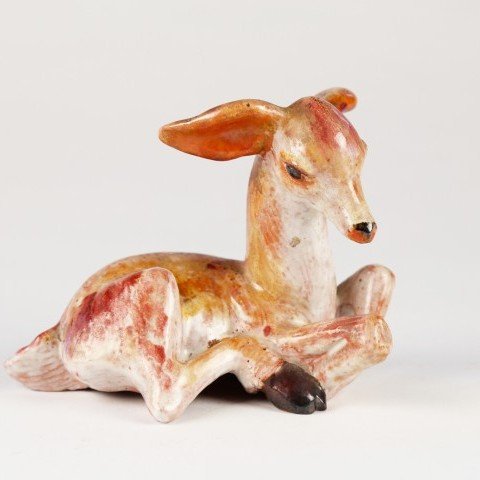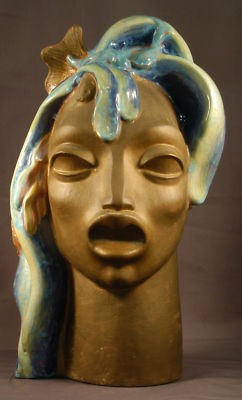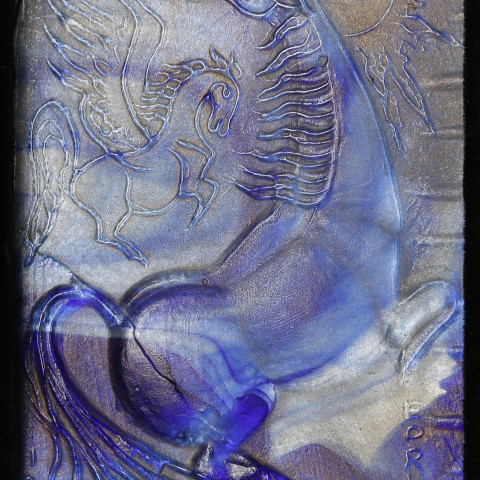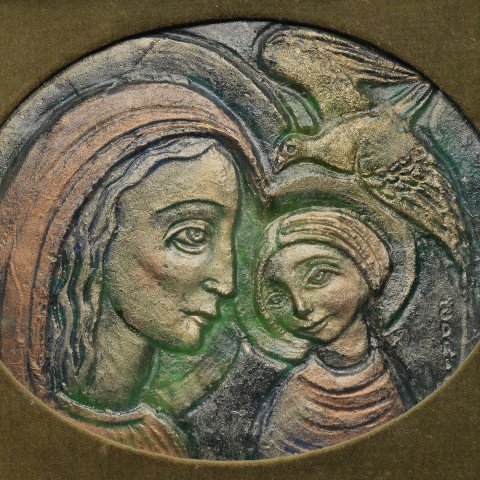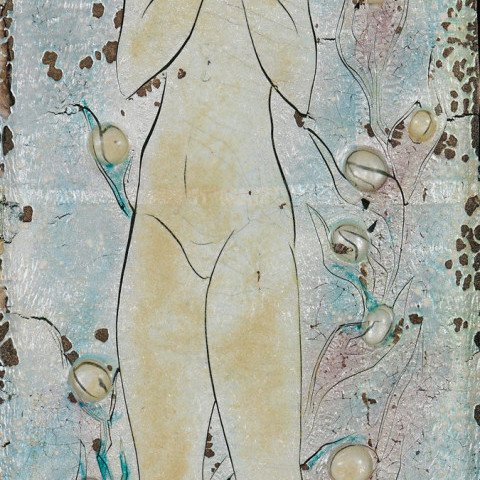Born in Cleveland, Ohio January 28, 1905, Edris was given the name Edythe Aline Eckhardt. After graduating from Cleveland's East High she enrolled in the painting program at Cleveland School of Art. While enrolled in school she worked part-time at Cowan Pottery where she learned production techniques and firing schedules of various ceramic materials. She switched her choice of study at CIA to sculpture and graduated from Cleveland's School of Art in 1932. Edythe changed her name to the non-gender-specific name Edris in her mid-twenties after being passed over for an award to study sculpture in Europe for one year.
Following graduation Edris studied sculpture with Alexander Archipenko in Woodstock, New York. She returned to Cleveland that same year. She was hired as a faculty member of Cleveland School and taught at the institution for 30 years.
From 1935-1942 Ms. Eckhardt was the head of the Ceramics and Sculpture division of the Federal Art Project (later known as Works Progress Administration - WPA) of Cleveland. During this time frame she won first prize of the 1936 Cleveland Museum of Art May Show for her Alice in Wonderland figure, third Prize in the 1937 May Show for a Song of the South figure, exhibited her work at the 1939 Golden Gate Exposition in San Francisco and in the 1939 New York World's Fair. Eleanor Roosevelt commissioned Edris to sculpt a figure of Huckleberry Finn. It was completed and installed near a reflecting pond in 1939.
Cleveland College hired Ms. Eckhardt as a faculty member from 1940-1956. This overlapped with her teaching positions from 1947-1957 at Western Reserve University (Cleveland) and Notre Dame College from 1950-1970. She shared her knowledge of ceramics with the general public by presenting demonstrations on television beginning in 1947 and by contributing articles to Ceramics Monthly magazine as early as 1954.
Around 1953 Eckhardt began experimenting in glass making. The studio artist and teacher known for ceramics would become known at this time as a studio glass artist. An article about Gold Glass in the December 1956 issue of Craft Horizons describes Edris as a "slip of a woman" who "rolls out sheets of her own glass with a rolling pin on a marble-topped table in her cellar".
Ms. Eckhardt received her first John Simon Guggenheim Award for Fine Arts in 1955. Her second Guggenheim Award for Fine Arts was presented in 1959. Edris used her first Guggenheim award to study glass in France, England and Italy. She was awarded a Louis Comfort Tiffany Foundation Fellowship in 1956, the same year she presented a paper at the International Glass Congress in Paris.
During the 1960s Edris studied bronze casting at CIA. From 1962-1963 she taught in the Glass Department at University of California, Berkeley. While West she researched the simultaneous casting of glass and bronze. Her continuing research was successful and she used this technique to create sculptures as late as 1979. Ms. Eckhardt returned to Cleveland after her year in California.
Edris was awarded The Cleveland Arts Prize in 1971. The award recognized her as a "Pioneer in Glass Sculpture".
Edris Eckhardt died in Cleveland Heights, Ohio in 1998.
source: askart.com

